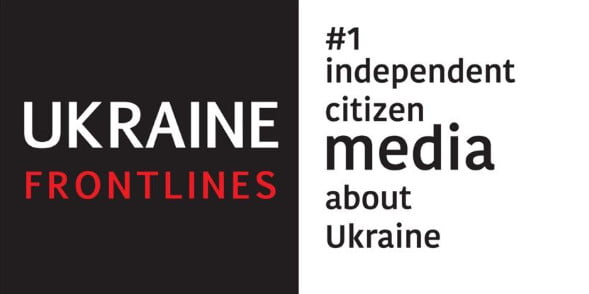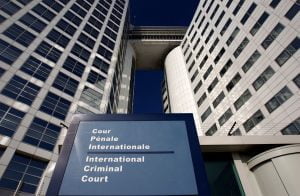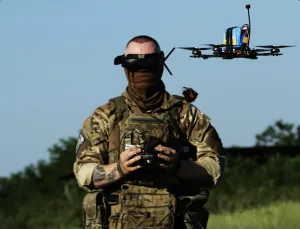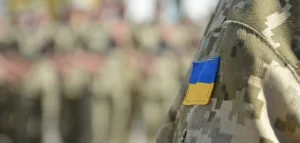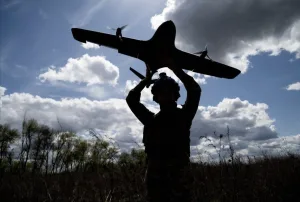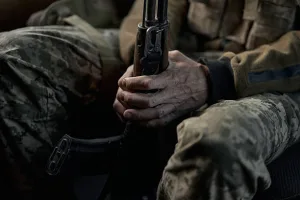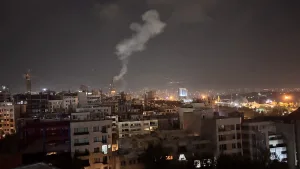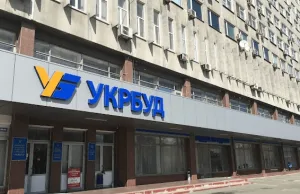Probably, the Russian General A. Teplynskyi, Commander of the Russian troops’ grouping “Dnipro” in the nearest future will have to solve a rather responsible task – to prevent Ukrainian troops from turning a number of small tactical bridgeheads on the left bank of the Dnipro River into 1-2 operational ones… And if possible, to eliminate them altogether.
At first glance, it seems that this will not be a very difficult task for the Russian command. Because, as of today, there are a number of advantages, including:
– the small scale of Ukrainian footholds,
– the presence of obvious difficulties in the Armed Forces of Ukraine in terms of their logistics and support,
– limited number and scope of Ukrainian forces and means holding them and, accordingly, difficulties with their combat stability,
– the enemy’s obvious superiority in the air.
However, the Ukrainian Armed Forces currently hold the following footholds on the left bank:
– in the area of the Antonivsky road bridge and the area of “Dachi”,
– opposite the village of Prydniprovske (near the Antonivsky railway bridge), to the railway bridge over the Verkhnya Konka River,
– and near the village of Krynky, to the Iskra recreation center.
These are the ones that are more or less sustainable and can be maintained on a permanent basis for some time to come.
In addition, the Ukrainian Armed Forces periodically operate in a so-called “raid mode” on Velyky Potemkinsky Island (to the Zastava base, Bilohrudove village), in the area of Lake Kruglyk (to the Konka River), and in the area of Lakes Milkiy and Deep Lyman.
Accordingly, in order to block and eliminate Ukrainian bridgeheads on the left bank of the Dnipro River, the enemy concentrated and deployed appropriate forces and means from its russian military grouping “Dnipro” and even from its still unformed strategic reserves.
In particular, in the following areas:
– In the area of Oleshky and north of it, units of the 127th separate reconnaissance brigade of the 22nd Army Corps (AC) of the 18th Combined Arms Army, reinforced by the 81st separate volunteer special purpose brigade “Bears” (in reality, it is 1.5-2 battalions), the 95th motorized rifle regiment, the 1441st mechanized infantry brigade and the 205th separate motorized rifle brigade are operating.
– In addition to these forces, units of the 171st separate air assault battalion of the 7th airborne assault division and the 177th separate marine regiment of the 58th Combined Arms Army have been deployed near the villages of Pishchanka and Poima.
– In the area of Kozachi Lageri village, units of the 205th Separate Mechanized Brigade of the 49th Combined Arms Army, reinforced by the 1445th motorized rifle regiment of the territorial troops, and units of the 24th Motorized Brigade of the 70th Motorized Rifle Division are operating.
In the direction of Krynky, units of the 144th Separate Motor Rifle Brigade from the 40th AC are completing their deployment, right behind the combat formations of the 26th Motorized rifle regiment of the 70th Motorized Rifle Division, and several Storm-Z units (up to 2-3 companies) are also operating here.
– Units and consolidated tactical groups of the 10th separate Special Forces brigade and the 25th “Olympic” separate Special Forces regiment are also operating along the entire stretch from Oleshky to Nova Kakhovka.
Over the past few days, the russian aggressor has made at least several “clearly accentuated” attempts to eliminate the existing Ukrainian footholds on the left bank of the Dnipro River.
Obviously, the enemy is unlikely to accept the current situation (meaning the existence of a number of tactical footholds of the Armed Forces on the left bank of the Dnipro River). Moreover, in this context, the Russian command is particularly concerned about the rather active and aggressive actions of our troops in this area, aimed at expanding and uniting these bridgeheads.
Therefore, in the near future, the russians will obviously not only continue their attempts to eliminate the Ukrainian Armed Forces’ footholds on the left bank of the Dnipro River, but will probably try to increase their efforts.
This is evidenced not so much by the appointment of what is believed to be the most “intelligent” Russian general to the post of commander of the Dnipro River Division, but also by a number of practical steps already taken by the enemy command, in particular:
-The operational deployment of units of the 70th Motorized Rifle Division of the 18th Combined Arms Army in this area has been completed, and three of its motorized rifle regiments are already here, two of them are in combat.
-The same is happening with the enemy’s 40th Army Corps. Its 144th Separate Motorized Rifle Brigade will be deployed in the direction of Krynky in the near future.
-Some units and subdivisions from the 58th Combined Arms Army and the 7th Airborne Assault Division (177th Separate regiment of marines, 171st separate air assault battalion and a number of others) have been regrouped in the same direction.
-In case of “urgent need”, the enemy’s 34th Separate Motorized Rifle Brigade will return from the Berdiansk direction to the “bosom of the native” 49th Combined Arms Army.
And finally, the enemy’s forces on the Crimean-Tauride direction as of yesterday morning.
The enemy’s military grouping “Dnipro”:
- personnel – 64278 troops,
- tanks (all types) – 384,
- armored fighting vehicles (AFVs), including armored vehicles – 917,
- artillery systems (AS), with a caliber of 100 mm or more – 488,
- multiple launch rocket systems (MLRS) – 72,
- launchers of the operational and tactical missile complex – at least 8 units.
All this is organized into the following formations:
- separate motorized rifle brigades, airborne assault brigades, marine brigades, separate coastal defense brigades and consolidated tactical groups of military bases – 8;
- motorized rifle regiments, tank regiments, airborne assault regiments, separate marine regiments – 17;
- separate motorized infantry battalions, motorized rifle battalions, tank battalions – 8;
- consolidated tactical units (battalion level), including BARS and Storm-Z – 4;
In reserve, deployed:
- motorized rifle regiments – 2
- separate reserve (rifle) battalions – 2
So, let’s summarize.
It is obvious that our footholds on the left bank of the Dnipro River are a source of concern for the Russian command.
It is also obvious that the enemy is conducting an offensive on two operational directions (Kupyansk and Avdiivka) and, by many indications, preparing the same actions on the Lyman direction, and is directing the bulk of its resources there.
Moreover, at least at two more it has to conduct active defense (Tokmak and Bakhmut), which also requires some effort.
Therefore, the “opening” of another “active” direction will clearly require BOTH sides to “sacrifice” active actions on one of the above-mentioned directions.
Otherwise, each side simply risks “losing”. And for the Ukrainian Armed Forces, this is more relevant than for the russians. First of all, in terms of the available number of combat-ready personnel.
In this sense, it will be very important to know what immediate goals and objectives both sides set for their troops.
This will directly affect the size and composition of the troops (forces) that they will use to conduct active operations in the Crimean-Tauride area. And accordingly, it will affect the course of events in other areas.
There is one more nuance – it is a little less than 80 km from the advanced positions of the Armed Forces of Ukraine near the village of Krynky in Kherson region to the Crimean peninsula, and more than 186 km from our advanced positions near the village of Novoprokopivka.
There are also fewer powerful “defense nodes” that the enemy is likely to turn Tokmak and Melitopol into on the Crimean-Tauride direction, at least in size.
Of course, each of these areas has its own characteristics.
On the Tokmak-Melitopol direction, for example, there is no Dnipro River, which still needs to be forced with significant forces and means and to ensure the maintenance of more or less significant bridgeheads.
However, the degree of density and echeloning of the Russian defense system, especially in the depth of the operational organization of the enemy’s troops, is significantly lower on the Crimean-Tauride direction than there.
Yesterday, they say, something like this “arrived” at the command post (CP) of the enemy’s “Dnipro” airborne unit… either ATACMS, or Storm Shadow or something else.
If this information is true, then General Teplynskyi, apparently, was “warmly welcomed” by the Armed Forces in his new position… As they say, “welcome”.’
Dear readers!
Ukraine Front Lines is independent citizen media and we value your direct support to the authors!
If you like this article, you have the opportunity to express affection with donation to the author at a difficult moment:
РayPal: kastet771@gmail.com
Bank account 1: 4441 1111 3454 1972
Bank account 2: 4731 2196 1439 9123
The author Kostyantyn Mashovets will be sincerely grateful.
Tags: crimea russia ukraine war